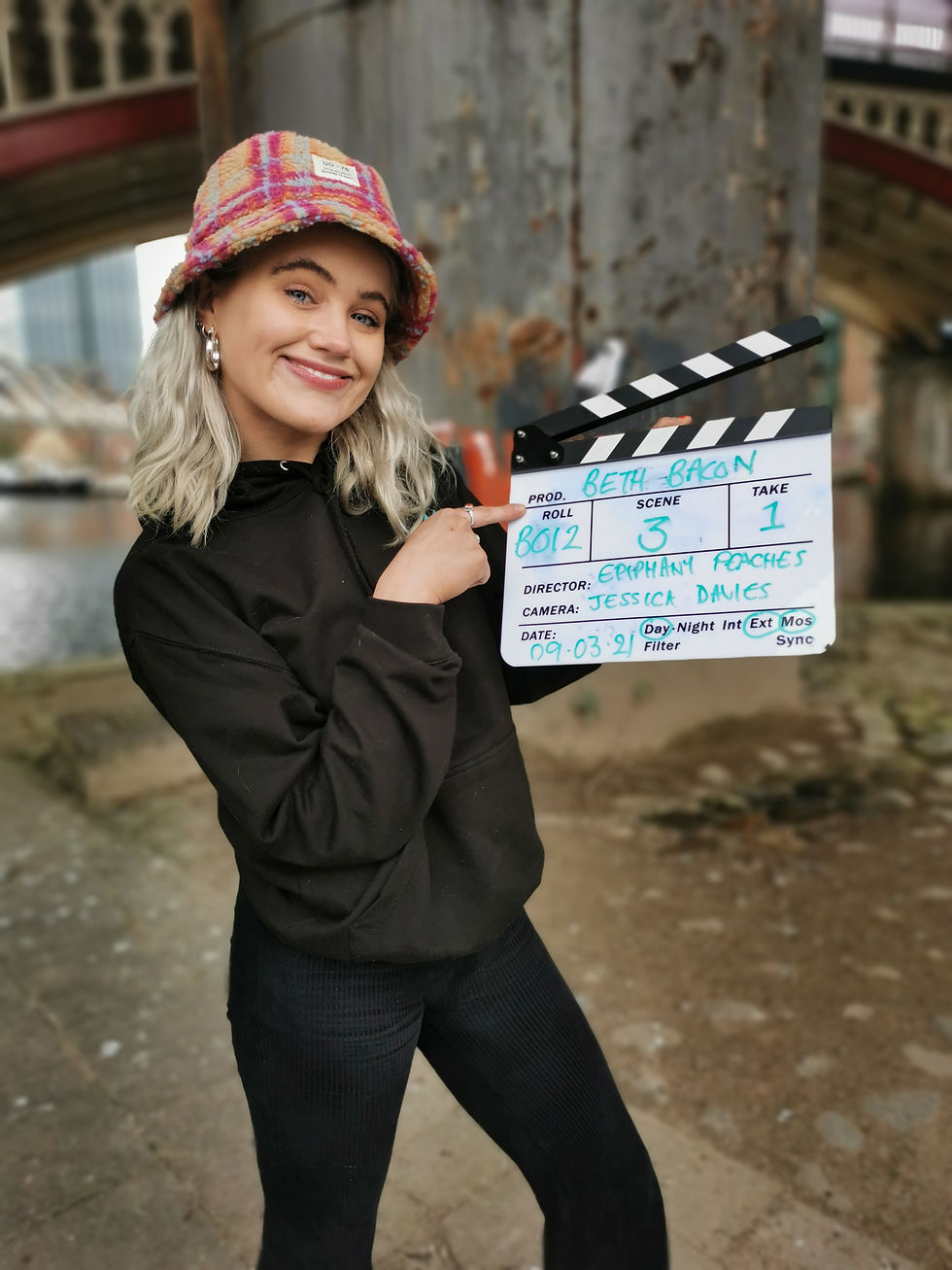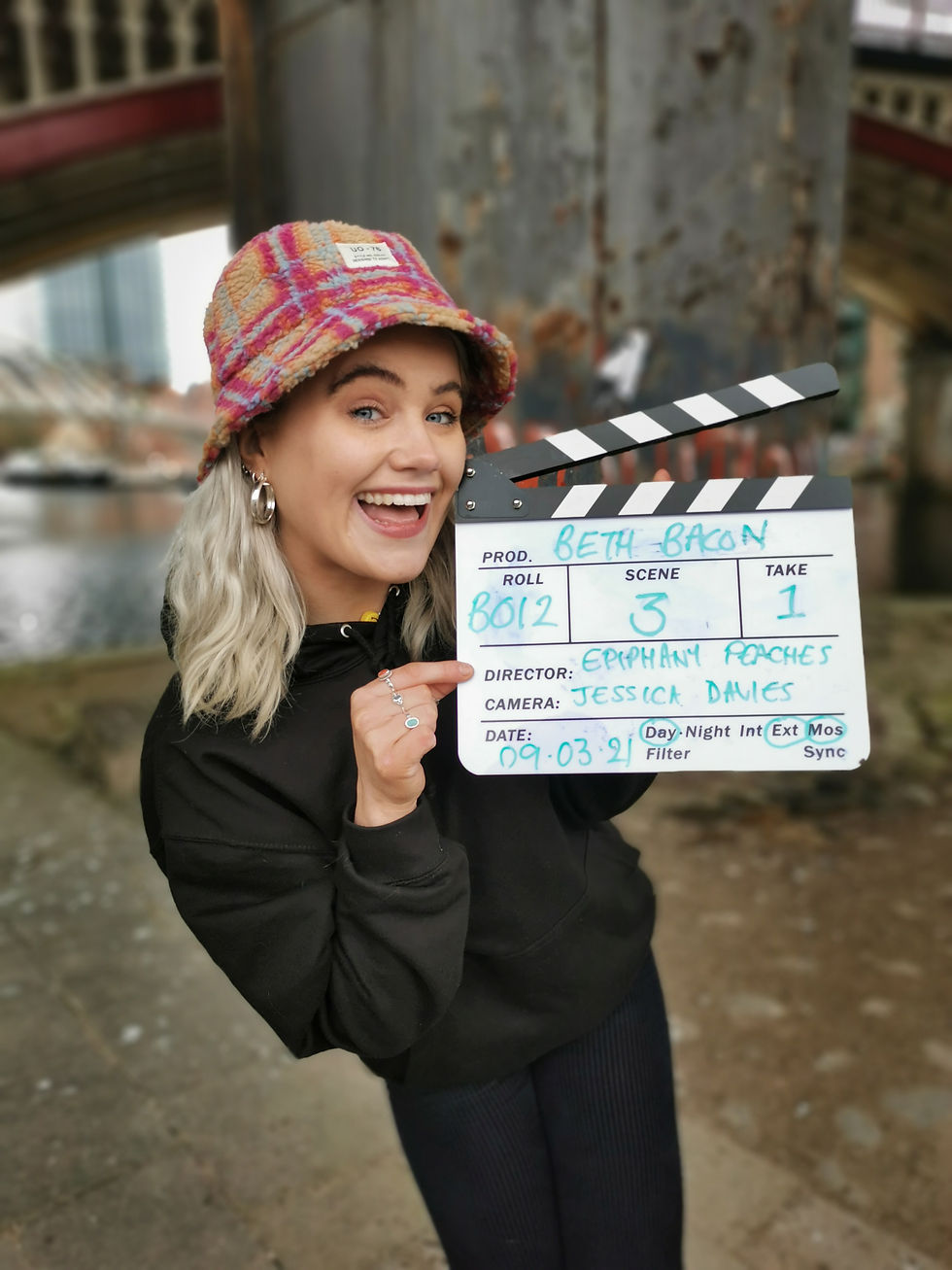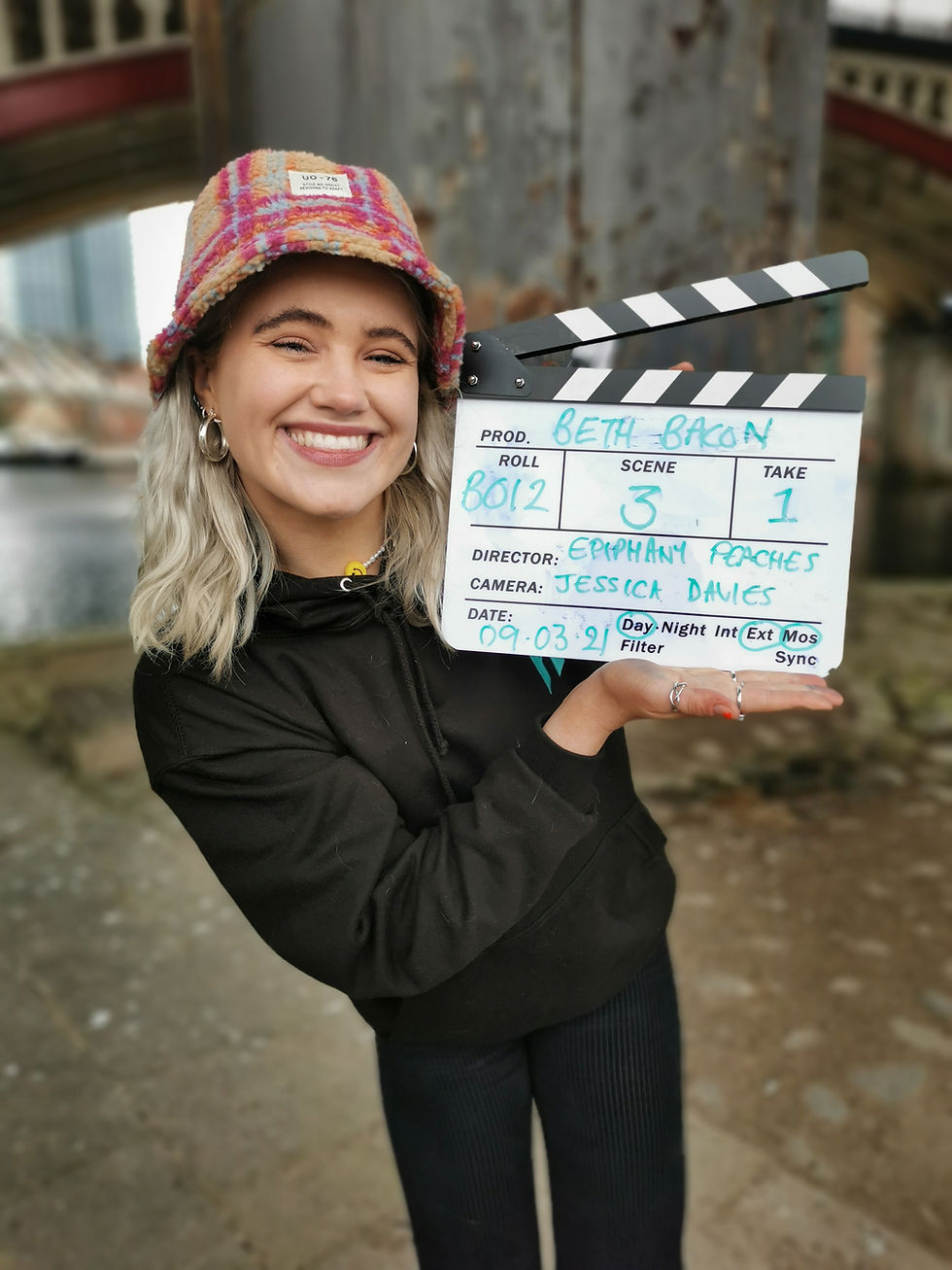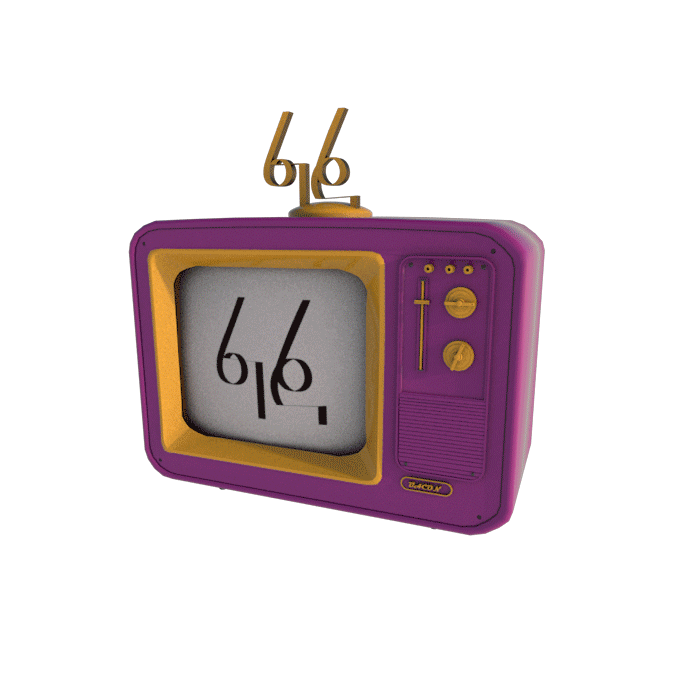
Using a clapperboard, more commonly referred to as a ‘slate’ on set, isn’t a requirement of a Runner but, if you’re lucky, it might be something you are asked to operate. So, it is best to be prepared to use it correctly.
Who uses a slate?
The person who tends to operate the clapperboard is called the Clapper Loader. However, I have often operated a slate as a Runner. It just depends on the size of the crew, the fewer the people the more overlap of positions.
There is a huge amount that goes into the job for those that are hired as Clapper Loaders. However, this article is aimed at teaching Runners the basics, just in case they are asked to operate a clapperboard on set.
What it all means
Ultimately, slates are used to sync sound and visuals during the edit. That way, when the footage is all edited together, there isn’t the voice of Barry saying, ‘core blimey!’ when the visuals show Glenda crying over her dead cat… and so on. Unless Barry was of course in the background shouting, ‘core blimey’ after the shock of seeing Glenda’s dead cat… I digress.
When the ‘clap’ is made, there is a peak in audio. This will show up in the audio levels during post-production. Therefore, the peak in the audio can be synchronised with the closing of the slate.
The stripes
The arrows across the top of the slate are there to make sure it is correctly in line. The nuts and bolts can come lose on the clapperboard, which causes the angle of the clap to slightly change. This could, ultimately, make it more difficult to sync the audio in post. Therefore, it is important to make sure all the arrows across the top are in line with one another. Top tip: keep a Leatherman with you on set at all times and if the nut comes lose, you can tighten it using the pliers at the end of your multitool.
The stripes across the top also create a focal point for the camera operators to focus their cameras, either by pulling focus or measuring focal distance. So, if you’re holding the slate, make sure you haven’t got your hands covering the stripes!
Roll
This term was created when film roll was used. So, you would record what ‘roll’ you were using for that shot. Today, shooting digitally, the roll describes what media file you are using. This is always written using one letter and three numbers. For example, B012. You should check what roll you are on with the person operating the camera(s) (who might be a Shooting PD, Shooting AP, or Camera Op).

Scene
The scene you are filming will be written on the sides and filming schedule you are given for the day. Stay alert and aware of what you are filming and when. That way, you will always have the correct scene written on the slate.
Keep the sides (a copy of the script that you are filming that day) with you at all times. Make sure you also have a filming schedule and Call Sheet with you too. I usually attach these to my bum bag using a crocodile clip.
If you are asked to call out the scene each time, use the phonetic alphabet, for example, ‘Bravo, zero, zero, one!’ That way letters will not be confused for each other, like ‘P’ and ‘D’. Here is a copy of the phonetic alphabet.

Take
How many times have you had to film the scene? Each time you film the scene, that is a ‘take’. As soon as you mark the slate, rub off the take number and write the next number. That way, if you have to quickly run back to mark the next take, then you are ready to go.

Production
What is the name of the TV show or film? Put this in bold and spell it correctly. Some productions put the name as an abbreviation here, especially if it is a long one. For example, if you were working on People Just Do Nothing you might put here: PJDN. Whatever you choose to write, try to keep it consistent.

Director
Spell their name right! If you don’t know how to spell it, either check on the Call Sheet or look them up online (possibly IMDB or Talent Manager).

Camera
Who is the Director of Photography (DOP)? Put their name here and spell it correctly.
Date
Simply, the date. But make sure to write this as clearly as possible: e.g. 20/02/21.
INT
Is the scene being shot inside? Then it is interior. Circle INT if so.

EXT
Is the scene being shot outside? Then it is exterior. Circle EXT if so.
DAY
Are you filming during the day? Circle DAY if so.
NIGHT
Are you filming during the night? Circle NIGHT if so.
SYNC
Sync means you are recording audio and visual separately, and so, these will have to be synchronised in post. Therefore, your slate is going to be very important to match up the two. Circle SYNC if so.
MOS
This stands for ‘mit out sound’, which literally means ‘without sound’. Legend has it that a German director once shouted, ‘mit out sound!’ for the next take to his crew. 'Mit' means 'with' in German, so it was a sort of merging of English and German. In the end the phrase stuck.
If you are filming a scene without sound, the clapper should be held with the hand in between the arrows so as to show that the slate will not be clapped. This, along with circling ‘MOS’ on the slate, makes it more obvious when editing the footage that no sound was recorded or if it was recorded, it is not intended to be used.

FPS
Some slates have an ‘FPS’ section, which stands for ‘frames per second’. This would be filled in if a slow-mo or time-lapse was being filmed, as the frame rate will be particularly important.
End board
Sometimes we can’t slate at the beginning of a take. This can be for a number of reasons. For example, the shot might be dangerous, perhaps looking over the end of a cliff, and it would be unnecessarily dangerous for a Clapper Loader to put themselves in harm’s way. So, at the end of the take, the camera might pan round to them to put the slate in after.
An end board will usually be held upside down and not clapped, so that it is obvious in the edit that this board is for that particular take and not the one proceeding it.

Accuracy
It is very important that you are accurate in all regards when using the slate. You should write clearly, preferably in block capitals (especially if you have illegible handwriting). Make sure you spell everything correctly, especially names of the crew and production.
Be ready
Be ready and waiting on set to whip out the slate at any moment. If you’re working in Scripted, check with the Script Supervisor and if you’re working in Unscripted, listen out for the Director as to when they need you to slate for the start of a new take. Be alert, on your toes, and definitely not on your phone or staring off into space. Finally, check that all the information on your slate is correct before you run in front of camera to clap.
Take a two or three drywipe pens with you. It is important to have a black and a blue and I usually take an extra bright colour, like orange or red, just in case something needs to be highlighted.
Have a small piece of cloth that you can attach to the pen or your bum bag that can be used to wipe off the pen when something needs changing on the board. That way, your hands and clothes don’t get mucky with ink and you look more professional. You could even embroider your initials into your wipe, so that if you drop it everyone knows it’s yours!
Most Runners will not be required to use a clapperboard. More than anything, it is really a specialist job for a Clapper Loader. However, in my experience, I have had to do it before. For someone with Anxiety, being given new tasks at the last minute can be quite daunting. Therefore, I want to spread anything I have learnt on set, so that other people that suffer with the same issues don’t face the same problems in the future. Always put your best foot forward and be prepared!
Good luck and keep running! x

コメント